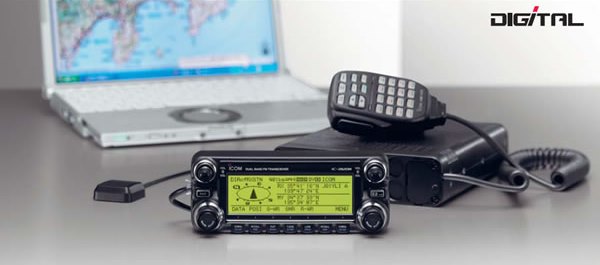
Enciens messages "DX News"
Italiaanse radioamateurs krijgen sinds deze week toegang tot de 70 MHz band. Sinds 23 juni is het tijdelijk toegestaan om een drietal frequenties te gebruiken. Frequenties zijn: 70.1000, 70.2000 en 70.3000 MHZ. Het maximale toegestane vermogen ligt op 50 Watts ERP en de maximale bandbreedte 12.5 KHz rondom genoemde center frequenties. Alle modes zijn hier toegestaan. De toestemming vervalt op 19 december 2014. Meer informaties vind je op de website van de A.R.I. (www.ari.it.)
Elle est organisée par l’association ORPB en liaison avec le Lannion Tregor Communauté et la Cité des Télécoms.
Enfin deux stations seront actives sous les indicatifs TM8PB et TM16EME.
Configuration 4 will be used:
- ARISS antenna 43
- Frequency 2395 MHz
- Symbol rate 2.0 MS/s
Ground stations F6DZP and IK1SLD will receive the signals and stream the video over the BATC server.
The video is expected to be received during 5 minutes.
This will mark the end of the Blank Transmissions.
No decision has been taken yet on the future use of Ham Video. We will keep you informed on any progress.
73,
Gaston Bertels, ON4WF
ARISS Europe chairman
- ARISS antenna 43
- Frequency 2369 MHz
- Symbol rate 1.3 Ms/s
Participants using the Tutioune receiving software can record as well as stream detailed parameters of the received signal. Please see: http://www.vivadatv.org/.
Reports are available at http://www.vivadatv.org/viewtopic.php?f=66&t=294&p=785#p785.
Thank you for your participation to the Ham Video testing campaign.
73 Alex IV3KKW

De plus amples information vont se trouver sur le site de la section UBA de Thuin ON6TN.
PI4 is a digital modulation (MGM) specifically designed with beacons and propagation studies in mind.
Download PI-RX to decode PI4: http://www.rudius.net/oz2m/ngnb/pi-rx.
PI4 encoding examples in Arduino C, Atmel C, Delphi Pascal, Microsoft Visual Basic and Microsoft C++: http://www.rudius.net/oz2m/ngnb/software.htm.
PI4 online encoding and frequency calculation: http://www.rudius.net/oz2m/ngnb/pi4encoding.php.
PI4 specification: http://www.rudius.net/oz2m/ngnb/pi4.htm PI4 is a cousin of JT4, JT9 and WSPR.
OZ7IGY status page: http://www.rudius.net/oz7igy.

RULES:
Contestperiod: August 11, 2013, 12:00 GMT – August 13, 2013, 11:59 GMT (end time last completed QSO).
Participation:
Class 1: QRP (< 1.5 kW ERP).
Class 2: QRO (>1.5 kW ERP).
Stations can participate in one class only. No difference between single- or multi-operator stations or modes.
Exchange: Full callsigns, reports (e.g. 26 or R26) and final rogers (RRRR)[5].
Final scoring: The total score is the sum of all points you received for all completed QSO’s together.
Logs via regular post can be sent to: A.F. Veldhuijsen, PA4EME, Westlandstraat 9, 6137 KE Sittard, The Netherlands.
Be sure you log contains at least the following:
- Your call, name, address and class you want to participate in.
- Stations in Class 1 (QRP) have to state details about the equipment they used in form of used output power and antenna gain. If no data about your station is given, you will be placed in Class 2. The power used for the calculation of the Effective Radiated Power will be the power measured at the output of your transceiver or active amplifier(s);
- The QSO list. As there are many logging programs available nearly every format is possible[6]. But make sure that the log will show at least: date, time (to be specific: end time), call, report send, report received, locator and distance (equals points).
- With sending your log you also declare to have operated within the limits of your chosen Class, licence and local regulations when performing any activity that could impact your submitted score. Unsportsmanlike conduct can be ground for disqualification. Also you agree to have the log open to the public which might result in publishing your log on MMMonVHF or in the magazines DUBUS and/or Funk-Telegramm.
- Reception of a log will be confirmed in the same way it was received.
Special scoring for outside Europe stations: There will be a separate listing for stations outside Europe.
Certificate: All stations will receive a digital certificate showing the Class and ranking achieved.
Additional notes:
[1] MMMonVHF (Make More Miles on VHF): www.mmmonvhf.de.
[2] DUBUS - the serious magazine for VHF and up amateur radio: www.dubus.org.
[3] Funk-Telegramm - Magazin für Funkamateure: www.funk-telegramm.de.
[4] IMO – International Meteor Organisation: www.imo.net.
[5] Operating Procedures for Meteor Scatter QSO’s: http://www.vhfdx.de/ms_howto.pdf.
[5] Проведение MS QSO в 1 районе IARU: http://www.vhfdx.ru/ms/provedenie-ms-qso-v-1-rayone-iaru.
[6] The “144 MHz Meteorscatter Sprint Contest” is supported by at least two software programs:
- Arcom (Ham Office) : www.hamoffice.de
- Ucxlog: www.ucxlog.de
Other logging programs are allowed as well.


